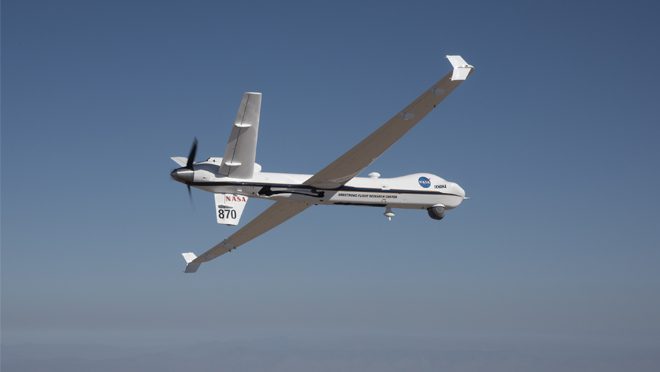The United States is one step closer to achieving the goal of normalizing aircraft operations in the airspace used by commercial and private pilots as the Ikhana aircraft successfully flew its first mission without a safety chase aircraft on Tuesday. NASA’s Ikhana now creates a lot of possibilities for providing a vast range of services by remotely-piloted aircraft. NASA successfully developed a standard for Detect and Avoid technologies that were in accordance with the requirements of the FAA Technical Standard Orders and garnered flight approval from the FAA.
This is a huge milestone for our Unmanned Aircraft Systems Integration in the National Airspace System project team. We worked closely with our Federal Aviation Administration colleagues for several months to ensure we met all their requirements to make this initial flight happen. – Ed Waggoner, Integrated Aviation Systems Program director, NASA
The Ikhana flew in accordance with the Federal Aviation Administration’s (FAA) Technical Standard Order 211 and Technical Standard Order 212. These kinds of aircraft have previously required a safety chase aircraft to follow it.
We are flying with a suite of sophisticated technology that greatly enhances the safety capabilities of pilots flying large unmanned aircraft in the National Airspace System. We took the time to mitigate the risks and to ensure that we, as a program, were prepared for this flight. – Scott Howe, Armstrong test pilot
The Ikhana aircraft was equipped to detect and avoid technologies, including an airborne radar, a Honeywell Traffic Alert and Collision Avoidance System, a Detect and Avoid Fusion Tracker, and an Automatic Dependent Surveillance-Broadcast capability.






